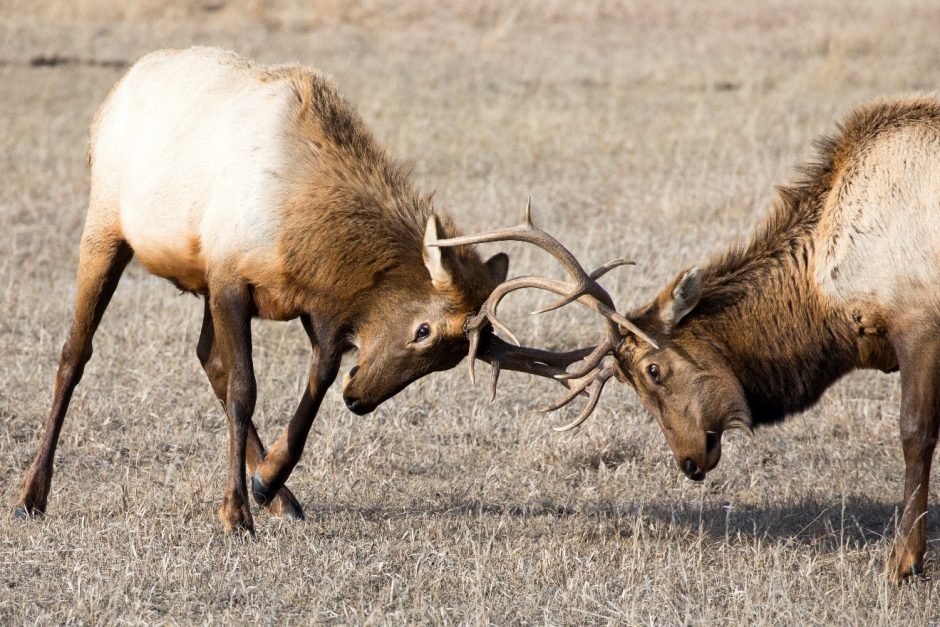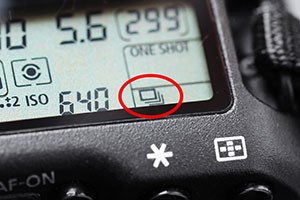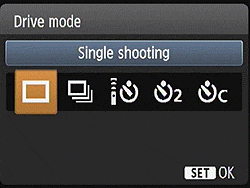
How to get this shot – Bull Elks Battling
Jackson, Wyoming is an outdoor lover’s paradise. It’s astonishingly close to both Grand Teton and Yellowstone National Parks, and a multitude of hikes, scenic drives, and prime wildlife watching areas. In addition, Jackson has a rather unique natural area, The National Elk Refuge. Each fall and winter, thousands of Elk descend from higher elevations to this safe haven, where they can hunker down for the winter.
If you have a chance to visit Jackson, The National Elk Refuge, or one of the nearby National Parks like Grand Teton or Yellowstone, be sure to get ready for scenes like the above. Or, join a photo safari from a reputable outfitter on a photo safari to the entire region and come home with some show-stopping photos like this one, and well beyond.
- Step One is the when and where. You’ve got to get yourself to Jackson, Wyoming, preferably in winter, once the elk have made their migration to the Elk Refuge. Although this photo looks like a sunny fall day, it’s actually in the dead of winter. The warmer temperatures in the valley here mean that sometimes you could get a foot of snow on the ground, or not. Either way, the elk will definitely be there, and you should, too, with camera in hand.
- Next, you’ll need to have a suitable camera and have it ready for action. A point and shoot with telephoto/zoom capabilities of at least 15x or 20x zoom will work great. For mirrorless and DLSRs, you’ll want to go for something in and around the equivalent of 300mm to 400mm on a full frame (that is, if you have a crop frame, you can get away with a little less due to the multiplier effect; and for mirrorless cameras with a 2x factor, a 150mm is fine).
- Now onto specific settings. First, you’ll want to make sure you have “burst mode” enabled. This allows your camera to shoot maximum frame rates, which usually is around 4 to 8 shots per second (sometimes referred to as FPS, which is Frames Per Second). Look either in your camera’s manual, or play around in the menus until you find the “drive mode” settings. Generally what you want is something that looks like multiple photos stacked on top of one another like the below. And usually your camera will default to “single shooting” out of the box, so you’ll likely indeed need to change it.


- Next, you’ll want to get the right shot settings dialed in. If you shoot on full-auto, no worries, and we’ll get to that next. But if you shoot on full-manual, or one of the aperture or shutter speed priority functions, you’re going to want to be sure you’re getting at least 1/500th of a second when you shoot. And 1/1000th of a second is even better. In addition, you’re going to want to increase your aperture slightly, so that you have a bit more reliable focus. I typically go for something like f/7.1 or f/8. While you could shoot “wide open” at your lowest aperture number, like f/4 or f/5.6, you have a bit more room for error (i.e., improper focus). However, if you’re a sniper behind the camera and get the shot focused perfectly every time, then go for it! These wider apertures at f/4 or f/5.6 will give you a bit more speed and/or allow you to shoot at a smaller ISO, so there is an advantage. But for most folks (me included), I’d rather have a bit wider depth of field so that if I focus a little off, I’m still covered with a tack-sharp shot.
- If you use a point and shoot camera, you’re going to want to find the “sports” mode. Think of the elk as being like runners on a track. Sports mode prioritizes all your camera settings for freezing motion, just like a sports photographer would do. Typically you’ll see an icon somewhere in your camera’s menu (or sometimes on the cameras physical dial) like the below. Get this mode turned on, and you don’t have to worry about specific shutter speeds or apertures–the camera does it all for you.

- Finally, find the elk, and shoot away! FYI, this isn’t a refuge you can just walk into, nor drive on with your own vehicle. Thus, you’ll want to do your research ahead of time and consider one of the hour or two tours the refuge offers in a horse-drawn wagon. Or, if you head out on a specialized winter photo tour in the area, you’re all set up and don’t need to worry about it—you’ll get onto the reserve and you’ll see plenty of elk.
- One thing you’ll notice is that your “continuous shooting” mode will likely capture lots of photos all at once. Basically as you hold down your shutter, it keeps taking photos. You may want to be a little careful with this, as it can quickly fill your memory card. However, it’s a very useful tool, as there is always that one shot that is better than the 20 others…that moment of impact, or when one of the elk has a unique look in its eye…who knows. The point is to just shoot away, and maybe consider bringing a little more memory if you’re not used to shooting on continuous or “burst mode.”
Now get our there and give it a shot,

Court
Leave a reply